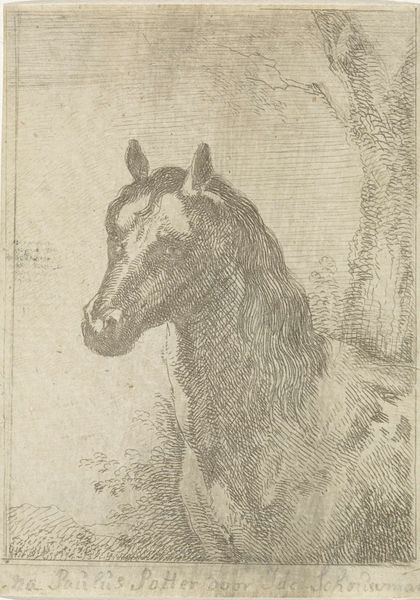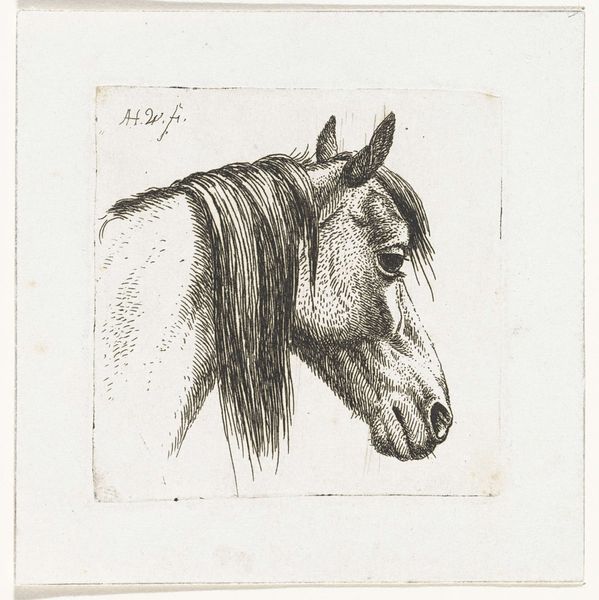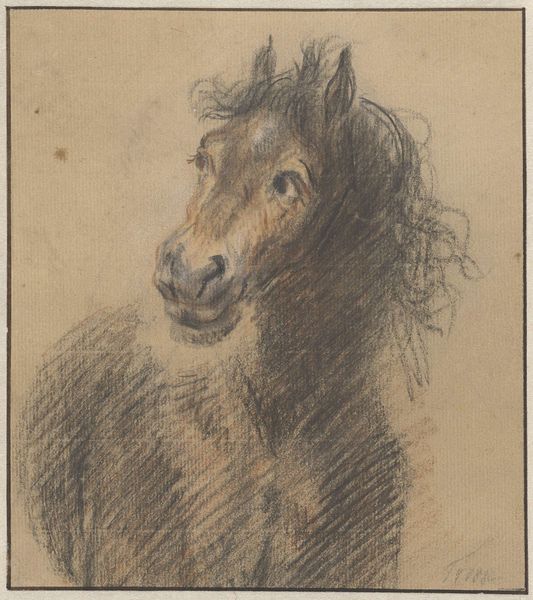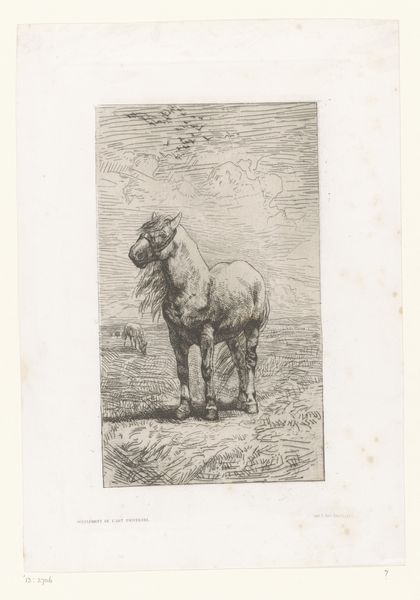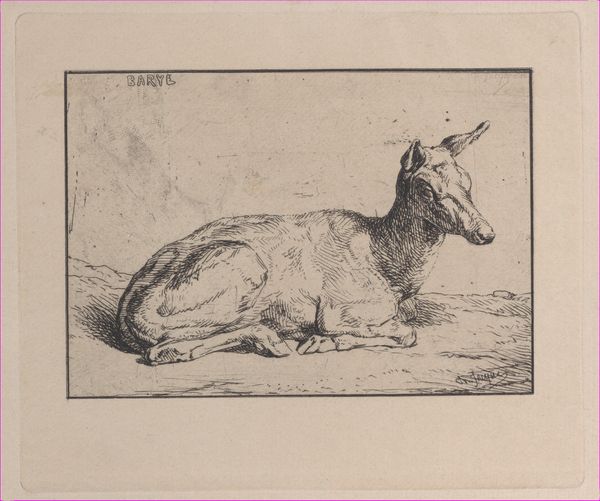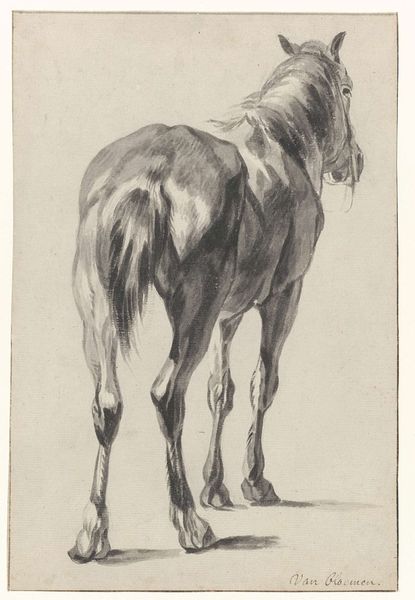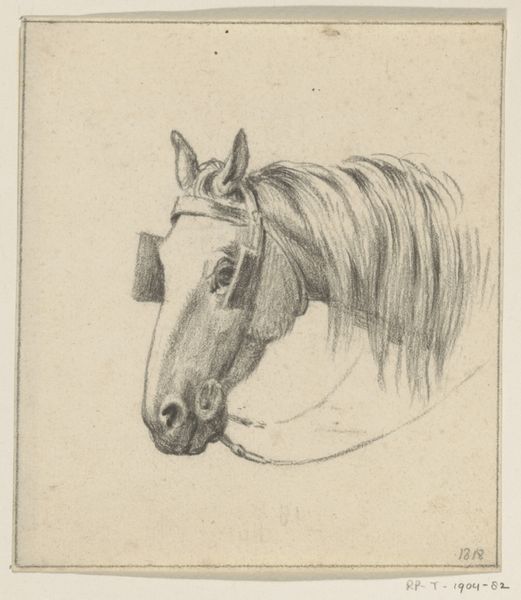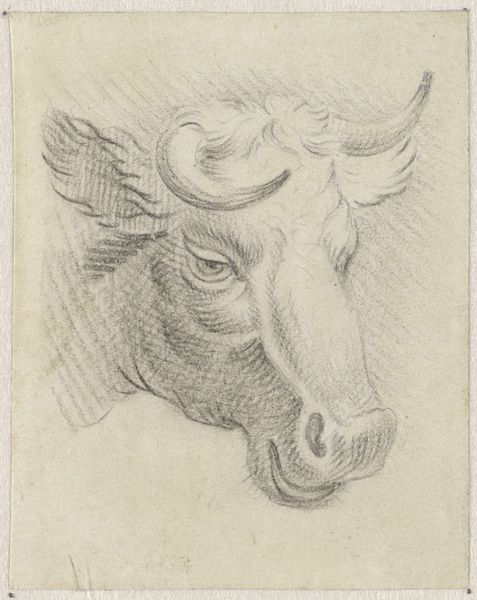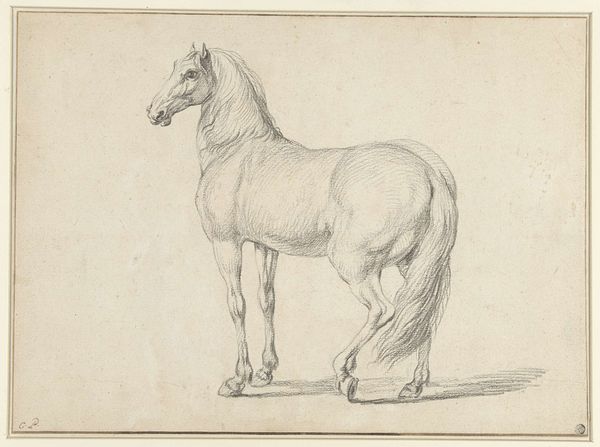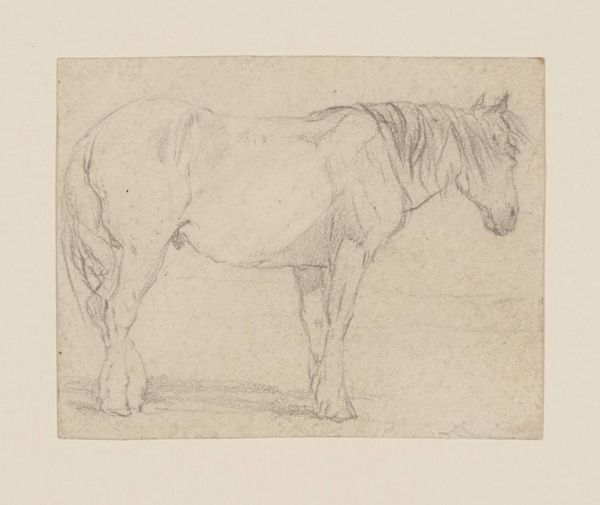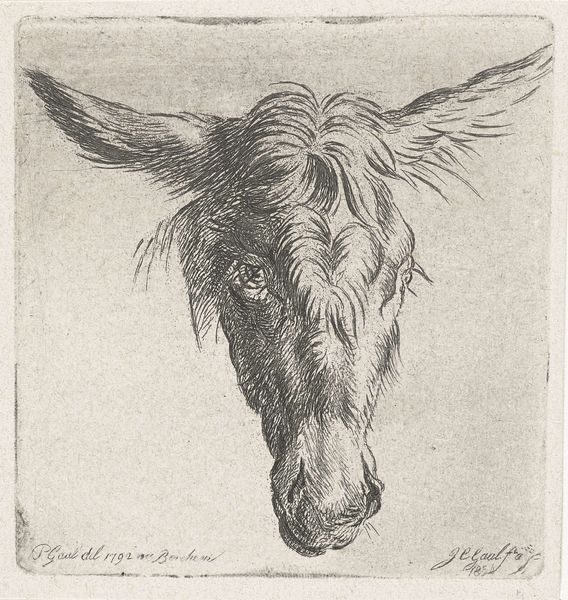
drawing, print, etching
#
portrait
#
drawing
#
baroque
#
animal
# print
#
etching
#
landscape
#
pencil drawing
#
horse
Dimensions: height 112 mm, width 81 mm
Copyright: Rijks Museum: Open Domain
Curator: This print, rendered in etching, is entitled "Hoofd van een paard"—or "Head of a Horse." Aert Schouman completed it sometime between 1725 and 1792. It currently resides here at the Rijksmuseum. What's your initial impression? Editor: There's a melancholy here, a wistful pensiveness in the horse's eye. He’s standing in what appears to be the beginning of a misty landscape that amplifies the dreamlike quality of the entire image. I almost expect it to whinny. Curator: Interesting that you interpret a mood of melancholy, the etching exemplifies Schouman's technical mastery of line and texture. Note how the density of the hatching defines the form of the animal. Editor: I notice that especially in the horse's mane—see how the varied textures almost give it a tactile sense of weight and shine. Curator: Precisely, but I would argue that such detail also constructs a structured, idealized vision of nature and emphasizes the animal's classical beauty over something more…personal. Schouman seemed committed to rendering forms through strictly formal arrangements. Editor: Maybe… but that formal arrangement almost feels like a vessel for something deeper here. Think of it! An era consumed with categorizing everything suddenly finding a way to allow feeling through. The baroque style seems a perfect way of balancing control and a hint of wildness. Curator: You think the 'wildness' peeks through, but it might merely be us projecting backwards the modern notion of ‘inner life’ on Schouman’s stoic portrait of an animal. Editor: Perhaps. But looking at those lines gives the feeling that something’s happening within this otherwise contained world… maybe a collaboration of the eye with something deeper—a hint of freedom struggling within the boundaries of the lines. It’s fascinating to observe! Curator: An interpretation like that may run the risk of anthropomorphizing the art or succumbing to romantic fantasies. I still maintain we see form more than true freedom here. Editor: Even so, isn't it that friction of seeing differently where a real interaction begins? Whether form or emotion takes center stage, that exchange feels at least truly worthwhile, I think.
Comments
No comments
Be the first to comment and join the conversation on the ultimate creative platform.
